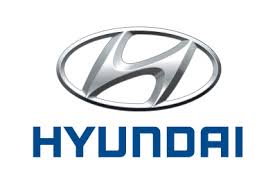By Odunewu Segun
Hyundai Motor Company, South Korea’s largest automaker, has announced its 2016 full-year business results. Sales volume and operating profit declined from the same period last year due to high production cost caused by series of labor strikes and continued economic stagnancies in emerging markets.
For the year 2016, Hyundai Motor Company’s global sales totalled 4,857,933 units (Korea: 656,526 / overseas: 4,201,407), down 2.1 percent year-on-year.
Despite year-on-year decrease in sales, Hyundai Motor’s sales revenue increased 1.8 percent to KRW 93.65 trillion (auto: KRW 72.68 trillion / finance and others: KRW 20.97 trillion) from a year earlier owing to sales increase of SUVs and GENESIS models. Operating profit fell 18.3 percent to KRW 5.19 trillion and net profit showed a 12.1 percent decrease to KRW 5.72 trillion, for 2016.
In the fourth quarter alone, global sales totalled 1,380,024 units while sales revenue posted KRW 24.54 trillion with operating profit of KRW 1.02 trillion. Hyundai Motor forecasts the business environment to be ever more uncertain due to continued sluggish global economy and possibility of increase in protectionist trade policies.
Nevertheless, Hyundai Motor will continue its effort to focus on strengthening competitiveness and product quality in the global automotive market. To do so, Hyundai Motor will launch variety of new cars and boost sales of SUVs, GENESIS models and eco-friendly models.
Also by continuously investing in R&D, Hyundai Motor will focus on three core future technologies Clean Mobility, Freedom in Mobility and Connected Mobility, to ensure future growth.
The company said it will continue its cooperation with suppliers and actively carry out more values to customers. Hyundai Motor also strives to build a more shareholder-friendly environment by increasing transparency and shareholder’s value. The company announced its new dividend policy which outlines a payout plan of 30 to 50 percent of free cash flows (FCF).

 Latest3 days ago
Latest3 days ago
 Latest5 days ago
Latest5 days ago
 News3 days ago
News3 days ago
 Energy6 days ago
Energy6 days ago
 Latest4 days ago
Latest4 days ago
 Comments and Issues6 days ago
Comments and Issues6 days ago
 Business6 days ago
Business6 days ago
 Business7 days ago
Business7 days ago




